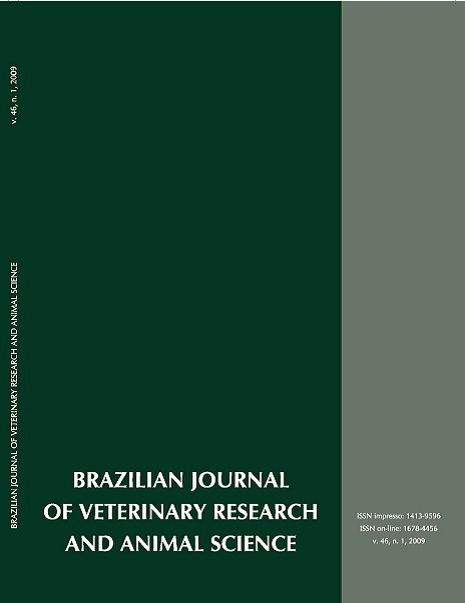Influence of environmental temperature, dietary energy level and sex on performance and carcass characteristics of pigs
DOI:
https://doi.org/10.11606/issn.1678-4456.bjvras.2009.26747Keywords:
Heat stress, Growth, Carcass, Dietary energy, SwineAbstract
Pigs are quite sensitive to high environmental temperatures and the thermoregulation mechanisms represent great expenses in energy for heating loss, reducing animal well-being and production performance, and altering carcass quality. The aim of this study was to assess the effects of sex and dietary energy level in growing-finishing pigs submitted to characteristic seasonal variation of temperature in subtropical humid climate, and to propose a mathematical model to predict growth performance and carcass characteristics. Twenty-eight crossbred growing-finishing pigs were randomly allotted to twelve treatments, in a 2x2x3 factorial trial (2 sex; 2 environmental conditions, and 3 energy levels). Heat stress condition (climatic chamber) showed temperatures of 31 ºC at 7:00 and 22ºC at 17:00 (maximum of 33 ºC) and thermal comfort condition (stall) showed temperatures of 18 ºC at 7:00 and 24 ºC (maximum of 27 ºC). Pigs were fed ad libitum with diets containing 12.2 (low), 13.6 (medium) and 15.0 (high) MJ ME/ kg DM. Voluntary feed intake, daily weight gain, and final body weight were higher (P<0.01) at thermal comfort condition and were influenced by sex (P<0.01) in growing pigs. Feed to gain ratio decreased as the energy level increased (P<0.01), with values of 2.67, 2.59, and 2.32 (12.2, 13.6, and 15.0 MJ ME/kg DM, respectively). There was energy level and sex interaction only for daily weight gain. Regarding finishing pigs, environmental conditions also showed effects (P<0.01) on voluntary feed intake, daily weight gain, and final body weight. Performance of pigs was better at thermal comfort condition. Feed to gain ratio values were 3.55, 3.42, and 2.95 for low, medium, and high energy level, respectively. Interactions between energy level and sex were observed for voluntary feed intake, daily weight gain, and final body weight (P<0.05). Carcass yield and quality were affected by environmental condition and dietary energy level. Both hot and cold carcass weight increased as energy of ration increased. Cold carcass weight increased by 1.142 kg/MJ EM whereas backfat thickness was up to 252 mm/MJ EM. Longissimus thoracis muscle thickness was around 16 mm smaller in pigs under heat stress, but lean content was 2.68% higher in those animals. Regression equations were proposed to predict the performance values in the different situations studied.Downloads
Download data is not yet available.
Downloads
Published
2009-02-01
Issue
Section
UNDEFINIED
License
The journal content is authorized under the Creative Commons BY-NC-SA license (summary of the license: https://
How to Cite
1.
Fagundes ACA, Silva RG da, Gomes JDF, Souza LW de O, Fukushima RS. Influence of environmental temperature, dietary energy level and sex on performance and carcass characteristics of pigs. Braz. J. Vet. Res. Anim. Sci. [Internet]. 2009 Feb. 1 [cited 2024 Apr. 20];46(1):32-9. Available from: https://revistas.usp.br/bjvras/article/view/26747





